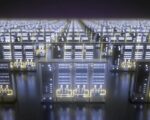Physicists have introduced a groundbreaking concept in particle physics: a new category of particles known as “paraparticles.” These theoretical entities defy the conventional classifications of matter into fermions and bosons, offering an entirely fresh perspective on the fundamental building blocks of the universe. Unlike fermions, which obey the Pauli exclusion principle, and bosons, which tend to exist in shared states, paraparticles follow unique exclusion rules. Their predicted behaviors could lead to revolutionary advancements in quantum mechanics and open up new avenues in quantum computing.
The mathematical framework for paraparticles, as described in a study published in Nature, was developed by Zhiyuan Wang of the Max Planck Institute for Quantum Optics and Kaden Hazzard of Rice University. Their research demonstrates that paraparticles can theoretically exist in any number of dimensions, significantly expanding the potential scope for their application. This innovative framework paves the way for the possibility of experimental realization, with researchers emphasizing the importance of advanced quantum computing technologies in recreating such particles.
Wang revealed that the concept of paraparticles emerged unexpectedly during his Ph.D. research in 2021. Despite the theoretical foundation being well-established, reproducing these particles in a controlled environment remains a significant challenge. Experts in the field are optimistic that the rapid advancements in quantum computing technology will soon provide the tools necessary to test these predictions. If realized, paraparticles could have profound implications, including reducing error rates in quantum computational systems and enhancing their overall efficiency.
The discovery also raises intriguing possibilities about the natural world. Paraparticles may exist in forms that have yet to be observed, potentially hinting at hidden layers of the universe’s structure. This work serves as a reminder of how theoretical physics can push the boundaries of what we understand about reality, challenging established paradigms and sparking innovation across multiple disciplines.


















